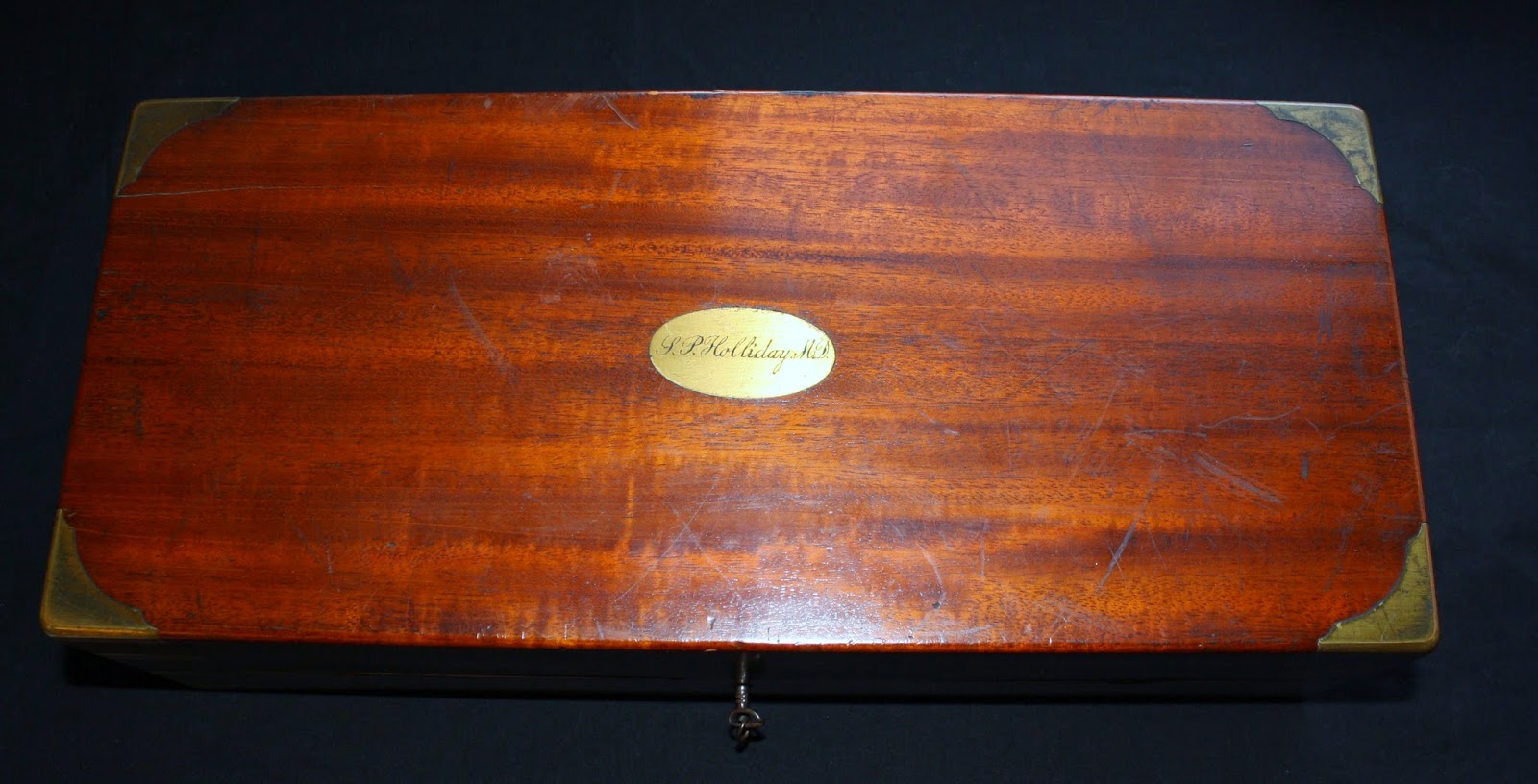Since I
work at the National Museum of Civil War Medicine, I’m sure you’d naturally
expect that the artifacts in the museum’s collection relate to Civil War medicine. That is generally true, but there are a few
items which may not appear to relate at first glance. Today let’s take a look at a surgical kit
which fits this category.
The kit
belonged to Gerard F. Mason, M.D., of Charles Town, Virginia (later to become
West Virginia). By all accounts, he was
a respected and prosperous physician in the town. His oldest son, William L. Mason, was a
member of Baylor’s Company, 12th Cavalry, C.S.A. However, Gerard Mason did not serve in the
military. His story is linked to someone
whose name might be familiar to you though.
During
his trial, the wounded Brown declared that he was too ill to attend court. His claim was suspected by some to be a ruse to delay his trial. Millard K. Bushong wrote in A History of
Jefferson County, West Virginia, that “Brown
was examined by Dr. Gerard F. Mason, a reputable Charles Town physician, who
pronounced him perfectly able to stand trial.” The trial was not postponed, but Brown
requested to be carried from jail into court on a cot and to give his testimony
while lying on a couch. However, it is
interesting to note that when court was adjourned that day, he walked back to
his jail cell!
So, Dr.
Mason’s distinction comes from being the physician who examined John Brown and declared
him fit to stand trial. Records also
show that Dr. Mason was one of the physicians who examined John Brown’s body
after his execution. His surgical kit,
though manufactured after the Civil War, still has a connection to Civil War
medicine, as well as a story to be told.
And that’s
one of the best parts of my job - you never know what sorts of stories you will
discover!
Photos
courtesy of the National Museum of Civil War Medicine, except where otherwise
noted.



Makes me wonder if you have anything connected to an army surgeon named John Campbell. He joined the army in 1847. At the outbreak of hostilities in the Civil War he was sent to Fort Pickens in Pensacola Bay.
ReplyDeleteHe had been in Jalapa, Mexico before and spent time in the west after the Civil War.
He was my ggrandfather.
I also work at a museum, and, if I had it to do over might have become a curator myself. Thanks for your work.
Don Campbell
Hey Molineux, I am a Park Ranger at Fort Pickens. We have a carving in a casemate that reads "JOHN CAMPBELL SURG USA" our historian is researching his history, and marking the carving for display.
DeleteBeen too long since I looked at this..Do you have an image of the carving? If so please email to roroyare at hotmail dot com.
DeleteThanks!
I am also interested in whatever your historian turns up...
ReplyDeleteDon Campbell